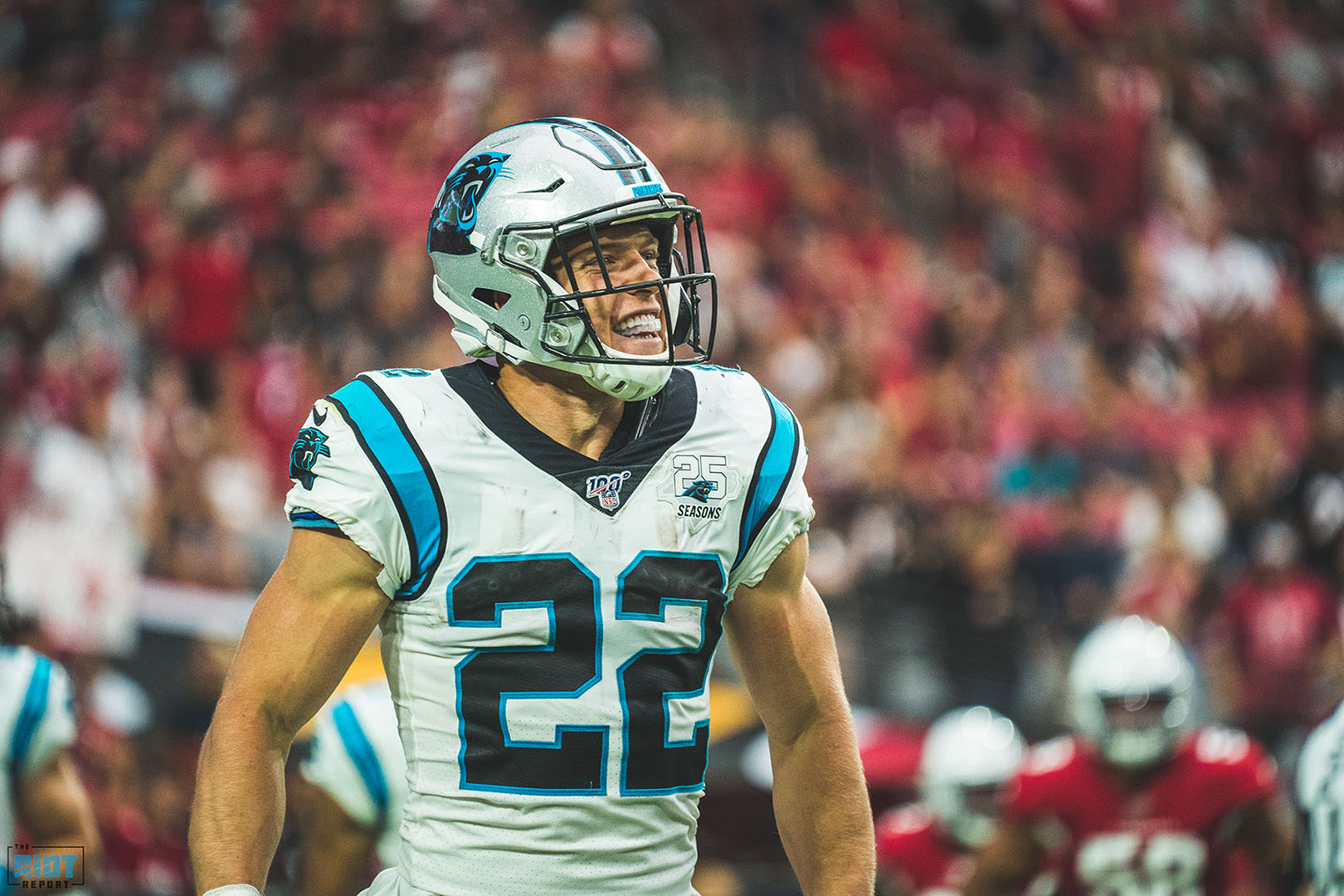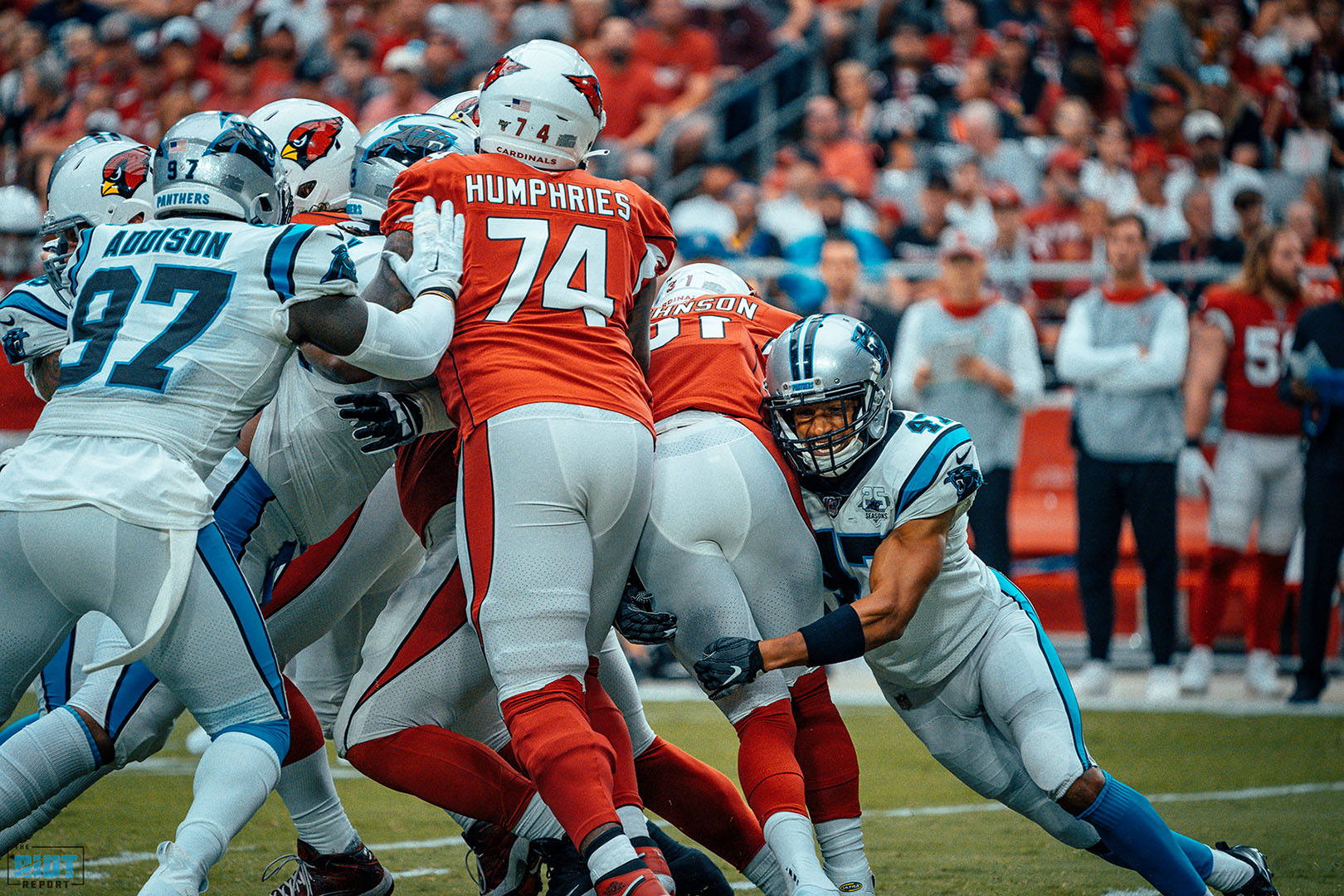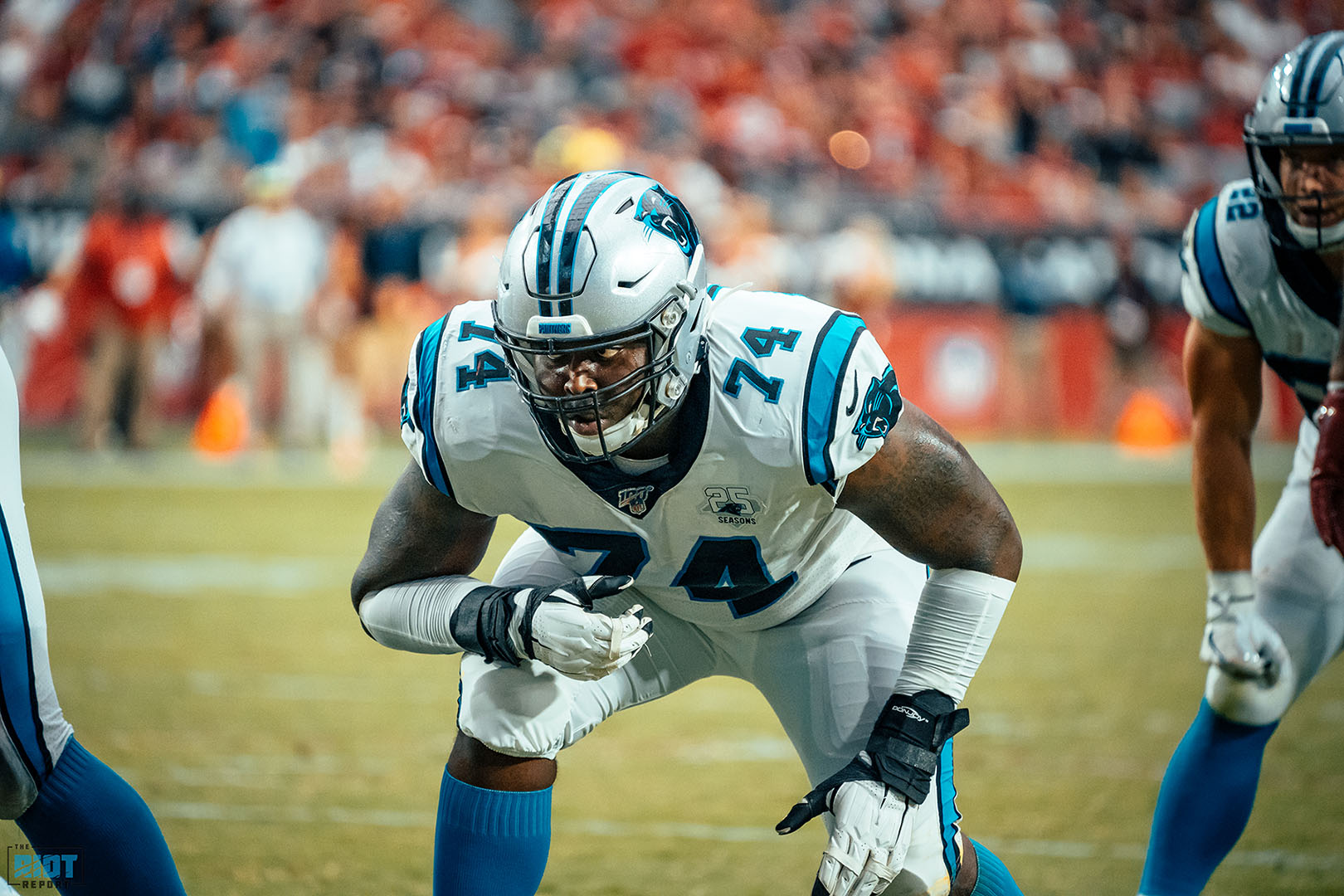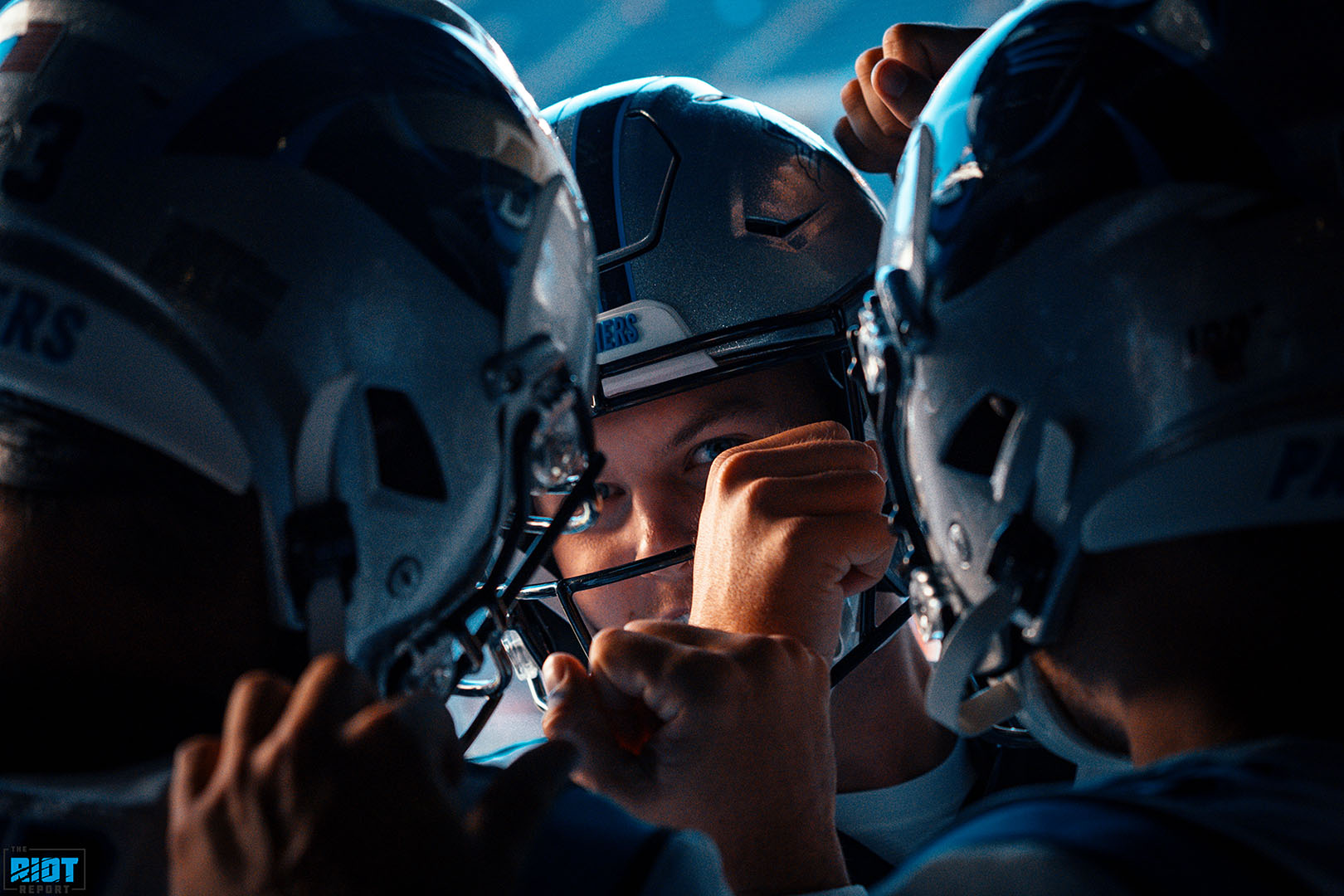Run The Ball, Again

Yes, the long touchdown looked really good, and yes, it was a really impressive piece of offensive execution, but even beyond that, the Panthers running game made a massive impact on the game on Sunday. McCaffrey didn’t generate front foot ball with every carry, but he was able to have enough success with enough frequency to consistently keep the Panthers ahead of the chains and to keep the threat of the run alive – thereby making things a lot easier for Kyle Allen as well as the Panthers’ offensive line.
Of course, the offense cannot depend on McCaffrey rushing for north of 180 yards in order to be effective, but they cannot afford a repeat of the Bucs game, where they struggled to have much success running the ball early and then appeared to just give up. One of the things they did against the Cardinals, which was gratifying to see, was that they focused on running the ball inside, but did so largely using zone runs, which minimizes the pressure put on the offensive line while also decreasing the amount of time the running back has to spend behind the line of scrimmage.
The Texans run defense – on paper – should provide a more stringent test for the Panthers rushing attack, and the Panthers don’t need to run rampant in order to have success offensively. With that said, as good as Kyle Allen was against the Cardinals, there is still absolutely no proof that he can be the guy who wins you games throwing the ball 50 times. That’s not to say that he can’t do that, but when you have a largely unproven backup in at quarterback, it is generally wise to make their job as manageable as possible, and that means giving them a running game to build the play-action game off of and to keep the defense honest.
Take Away The Easy Yards

The Panthers played an awful lot of off coverage last season, and they have played quite a lot so far this season as well. There isn’t necessarily anything wrong with off coverage, but when you play a lot of off coverage, teams have a real chance to get easy yardage underneath defenders, and this can then create knock-on problems. The former is something that Panther fans might have seen at times already this season, with possibly the best example of this being the way the Panthers have allowed teams to have success with quick screens.
The Rams ran a quick screen on their first third down in Week 1, and the Cardinals also looked to take advantage of the space underneath at times, but the most worrying issue this creates was exposed by a play the Cardinals ran that eventually ended in a drop. On the play in question, the Cardinals ran a receiver underneath Donte Jackson, and having been nickel and dimed throughout the match, he looked to dive on the underneath route – which in turn allowed the receiver going vertical to run right past him.
The issue with consistently giving receivers a free release and plenty of space to work into is that it not only allows them to pick up consistent short yardage through the air, but also forces your defensive backs to work quickly downfield to prevent additional yards after the catch, making it comparatively easy for offenses to force them to pick between the underneath option and the vertical route. The Panthers don’t need to play press every down, but anything they are giving the receiver more than five yards off the line of scrimmage they need to question what advantage this extra space is giving them.
Always Remember Protection

Two of Kyle Allen’s four third down failures were due to sacks, one of which led to a fumble – and neither of which were caused by coverage as much as by Chandler Jones being better than the person who was blocking him. One of the many reasons why Kyle Allen was able to be as effective as he was was because he didn’t spent the majority of the game lying on his back or running for his life. While the Cardinals’ edge rushers are really very good, it’s not as if the Texans’ pass rushers are anything less than potent.
Of course, every team will allow some degree of pressure over the course of a game, but the key for the Panthers against the Texans is to be able to drop back to pass without constantly having to either get the ball out within a couple of seconds or risk getting hit. The biggest improvement that the Panthers made in this regard against the Cardinals was the use of Greg Little at left tackle. Little certainly wasn’t perfect and will need to continue to develop as the season goes along, but he legitimately held his own against Chandler Jones, one of the very best pass rushers in the NFL.
I understand the Panthers want to bring him along slowly to a certain extent, and if he isn’t as up to speed with the playbook as is necessary for him to play every snap at this point, there might be some excuse for continuing to rotate against the Texans – but quite frankly, he was able to hold his own in pass protection with Chandler Jones and Terrell Suggs, and that is not something that could be said for Daryl Williams. If the Panthers want to continue to throw the ball with the same success they showed against the Cardinals, they are going to need to protect Kyle Allen, and that likely means playing Greg Little at left tackle.
The Panthers should feel somewhat encouraged about their chances of beating the Texans, as while it would be massively premature to say that everything is fine and wonderful after their first win of the season, there were times on Sunday where it was possible to see just how talented this team is in many regards; if they can bring that together, they really should be seen as a legitimately good team even without Cam Newton. The criticism of the Panthers under Ron Rivera is that things just haven’t come together often enough, but when they’ve been good, the Panthers have shown they can be as good as almost any team going.
Let’s just hope that the Cardinals game was a preview and not an aberration.



